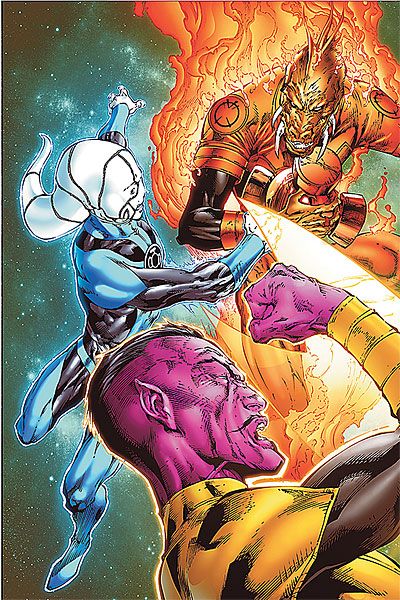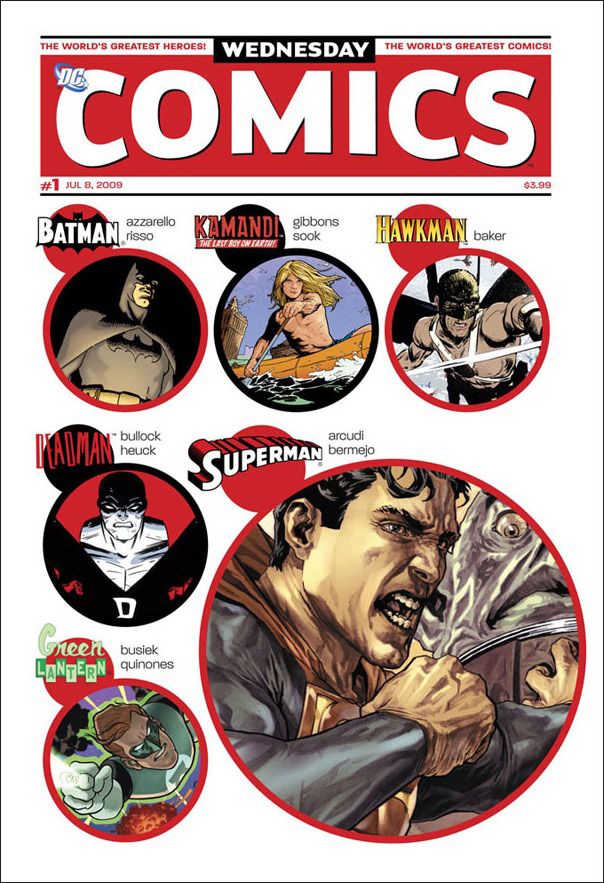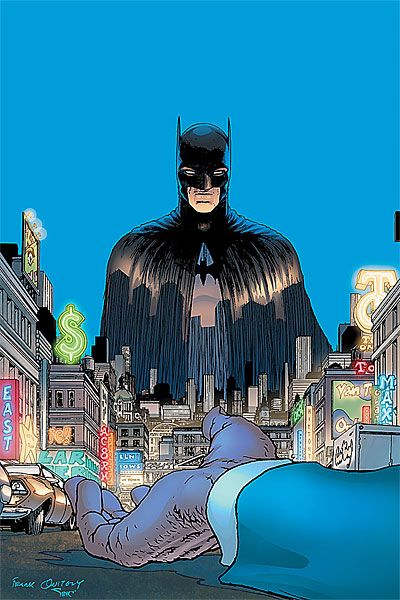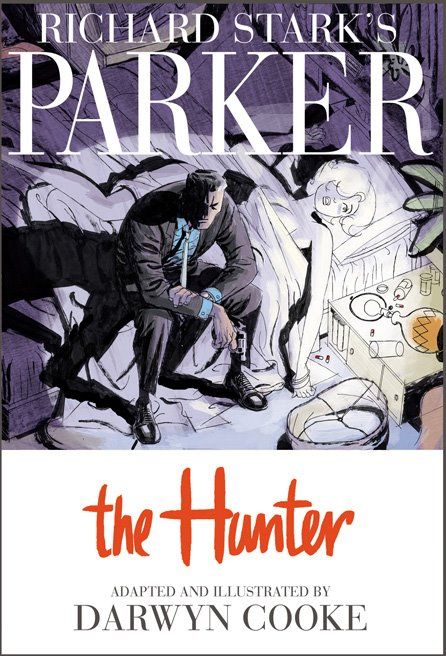Is it Sunday again already? Time for another What Are You Reading then. Our guest this week is blogger and Bleach fanatic John Jakala. Has John been reading Bleach this week? Click on the link to find out. Oh, and don't forget to tell us what you are reading in the comments section below.
Tom Bondurant: Boy, that Prince Valiant hardcover looked great, didn't it? The color is just stunning. The stories (what I've read so far, at least) are fun as well, with a nice mix of realism and fantasy. I'm looking forward to future volumes, both to see how Hal Foster's style and Val's character develop over the years.
I liked Blackest Night: Tales of the Corps #1 more than I thought I would. The lead story (written by Geoff Johns and drawn by Jerry Ordway) was a somewhat odd duck, like "The Twilight Zone" meets the Old Testament. It's the origin of Saint Walker, leader of the Blue Lanterns, and I suppose it's a superhero-ish take on the Book of Job, except without all the smack-talk from God. The second story is about the early years of today's Mongul, leader of the Sinestro Corps. (Remember, his dad was the Mongul of "For The Man Who Has Everything," the Superman-in-space storyline, etc.) Written by Peter Tomasi and drawn by Chris Samnee, it shows Kid Mongul emulating his dad by making a group of marooned extraterrestrials his conquered subjects. Dad shows up at the end, leaving Junior with a fairly ironic life lesson. It's disturbing in a darkly funny way -- more EC sci-fi than "Twilight Zone." The last story introduces the Indigo Tribe, an inscrutable quasi-Lantern-Corps who speak in an untranslatable language and who do some mysterious things to a mortally wounded Green Lantern and his similarly-situated Sinestro Corpsman foe. Overall, I thought the issue was entertaining, and it will probably provide some relevant insight into the various rival Corps. (Well, the Mongul story not so much -- I suspect we could have figured that out about him on our own.)
Seems like there must have been some behind-the-scenes shenanigans surrounding Steve Englehart's departure from the '70s Doctor Strange, because finishing up Essential Dr. Strange Vol. 3 felt like jumping through a series of corrective hoops. First Englehart wrote two issues of "The Occult History Of America" before that arc was completed by editor Marv Wolfman. Wolfman then introduced the Creators and the Quadriverse as another challenge to Strange's (and the reader's) understanding of reality. Then, Jim Starlin came aboard for a few issues, and finally Roger Stern wrapped it all up with the In-Betweener, who apparently was related to Adam Warlock, Thanos, and a recent Avengers storyline. Thus, over about ten issues, the book went from Englehart's quirky take to a more mainstream, shared-universe-friendly status quo. Not that Stern's story was bad -- it seemed more reasonable than both Wolfman's and Starlin's take -- but it purported to show what was "really" going on.
I've started reading the new Madame Xanadu paperback, written by Matt Wagner with art by Amy Reeder Hadley. After two issues I like it quite a bit, especially Hadley's art. The cameos from various magical DC characters (and the one artifact) are fun too. On deck are Showcase Presents Bat Lash and a couple of '70s Marvel series in Essential form.
Tim O'Shea: Last week, I had one minor beef with Wednesday Comics -- and that was the Simonson & Stelfreeze credits with the Catwoman/Demon story. Did I mention it was a minor quibble? Well, minor or not, I was pleasantly surprised to get an email from WALT Simonson last weekend -- explaining quite simply why the credits are the way they are. "Sorry. Didn't want to screw up the symmetry of Simonson/Stelfreeze." Makes sense to me. Thanks for the explanation, Walt.
Now on to this week -- and Wednesday Comics again. Karl Kerschl's framing of two "strips" (Iris West/The Flash) in one with Flash Comics is delightful. It would have been my top story of the Wednesday Comics collection this week, were it not for Kyle Baker. Kyle Baker gave readers a scene with Hawkman, a child and a smile. Four simple panels in the midst of a frenetic adventure that reminds me yet again why Baker is one part artist/one part cinematographer in his storytelling.
Mark Waid finishes up the first major arc with The Incredibles this week. My son is loving the book and so am I, but for different reasons. For me, I'm loving it for the comedic moments that Waid works in, almost as asides it seems (and that's a compliment). My favorite bit in The Incredibles 4 is the "heights" that Violet's boyfriend goes to get in a good cell zone to call her.
Any week I get to type the name Gene Colan is good for me. Go get Captain America 601, sure it's a filler issue to a certain extent, but it's Gene Colan.
Finally I greatly appreciated Jess Nevins' analysis of Fu Manchu in the back of Incognito 5. Kudos to Brubaker for working in content like this into his Icon series.
Matt Maxwell: Light comics week reading this week. (Mostly books from last week anyways).
WEDNESDAY COMICS #1
There's some great pieces here, but Ben Caldwell's WONDER WOMAN is the standout. Okay, SUPERGIRL is a standout too. And Risso...well, it's Risso. I mean, you can't pass that up. Oh, and Garcia-Lopez on METAL MEN. Everything he does is a master class in storytelling.
But Caldwell's take on WONDER WOMAN is a real gem that actually does something intriguing with the space he's been given. Don't get me wrong. The others are nicely done. But they don't jump out as really exceptional.
I'll probably buy all of these as they come out, but I would be lying if I said that I didn't want to read all the stories collected instead of anthology style.
Morrison and Quitely make this seem like it's so easy. Like it's a breezy little jaunt through the back alleys of Gotham City and it all just came off the tops of their heads. But it didn't. There's a real weight and substance and insight at play. Instead of working with the ultra grim "I must become a bat" school, Morrison and Quitely instead play up "I'm an actor playing a role" angle. And giving the role of Robin to Damian allows him to be a great foil for Dick Grayson's Batman. It's a far better book than I thought it would be and I figured it'd be pretty good (and I lost interest in Morrison's run on Batman when it became BATMAN RIP). But this book is something else entirely. I don't want Bruce Wayne back as Batman. Let him vacation
for awhile. He's certainly earned it.
At least I think it's #7. I'm not used to keeping track of numbers in the comics I'm reading, since I switched over to mostly trades. You know why I like this book so much? Because it's not about characters that I was reading thirty years ago. This is uncharted territory in the Marvel U. And who better to set course for it than Jeff Parker, who has a sense of history, but isn't enslaved by it (as well as a sense of adventure but isn't interested in breaking toys just to break them.)
Research reading? Who has time for that? I've got kids out of school and they need entertainment, dammit! HERE WE ARE, DAD ENTERTAIN US.
Brigid Alverson: I always loved classic comic strips as a kid, so I was delighted to see NBM’s collection of Frederick Opper’s Happy Hooligan strips from the early 1900s. The book is beautifully produced, with an essay summarizing Opper’s professional work and very nice reproductions of the strips themselves—not an easy feat when you’re talking about yellowing newspaper comics. They probably look a lot better on these pages than in the original. Every strip turns on the same device: Happy, a well-meaning hobo, tries to help someone, is misunderstood, causes all sorts of chaos, and winds up being hauled off by a truncheon-wielding policeman in the final panel. Opper tells each of these stories in six panels with an ascending degree of mayhem and lots of side comments. The similarity of the storylines make this a book that’s better to dip into than to read cover to cover, but it’s a great summer diversion.
Speaking of summer, it’s finally getting hot and sticky here on the East Coast, so I’m escaping with Jiro Taniguchi’s The Ice Wanderer, which comprises six short stories that all share a certain sensibility with the works of Jack London. The first story is a ghost story that is old as the hills, but Taniguchi makes it fresh and ties it so tightly to the place, it’s hard to believe he isn’t from the North himself. His art is crisp and clear, with little of the stylization people usually associate with manga; this is a good example of manga that an indy comics lover can enjoy.
Finally, Alan’s Letters is not a comic but an illustrated nonfiction book, the story of Alan W. Lowell, a World War II soldier who died in combat in 1944. The book, by his niece Nancy Rial, collects his letters starting with basic training and presents them alongside photos of army equipment, vintage postcards and flyers, and modern photos of the sites in France where Alan fought. It all adds up to a very complete and moving picture of army life, as seen through the eyes of an earnest young man.
Chris Mautner: I recently finished Darwyn Cooke's adaptation of The Hunter and will have a full review up next week.
I'm also reading a couple of books for The Comics Journal, including the latest (and presumably final) For Better or for Worse collection, Just a Simple Wedding. I have a love/hate affair with creator Lynn Johnston. I think she's one of the most talented cartoonists working in newspapers today, but she lays on the sentimentalism with a trowel. And don't get me started on Anthony.
One book I just started was Larry Gonick's Cartoon History of the Modern World Part II: From the Bastille to Baghdad. The book's not out until October, but HarperCollins sent me an advance review copy to read. I've been a big fan of this series since it started waaaaaaay back when, and am eager to read this final volume, if a little sad that it's finally ending.
John Jakala: I'm perpetually behind in my comic reading, but this past week I actually managed to read several books that have been sitting near my bedside for weeks.
Bleach 27: The latest installment of one of my favorite shonen manga series. It's mainly a series of downtime vignettes before the next multi-volume fight scene kicks off, but there are some satisfying moments for long-time Bleach fans. I loved finally seeing Urahara in action, especially when he frustrated his opponent by finishing his sentences. It was great to see Chad and Uryū get some screen time hopefully they'll be able to pull their weight and not merely serve as punching bags before Ichigo steps in to save the day. And although Orihime's abduction by the Arrancars reeks of the same damsel-in-distress syndrome that befell Rukia in the never-ending Soul Society arc, I'm hopeful that Orihime will be a more active protagonist than Rukia was because Kubo is upping her powers in interesting ways.
Slam Dunk volumes 3 & 4: I'd already read the material in these volumes back when Gutsoon published the series (first in the Raijin Comics anthology and then in the TPB collections) but I still bought the Viz editions because (1) I want to support the series and (2) I find the differences in translation fascinating.
Kurosagi Corpse Delivery Service 9: KCDS is the series that received my vote for best ongoing series of 2009, and this volume is a great example why: In addition to the usual ghastly and gruesome scenarios the gang finds themselves in, we also learn a bit more about the tragic personal backgrounds of two members of the Delivery Service. Combining pathos with horror makes for a surprisingly rich reading experience.
Pluto 3: There is so much I love about this book. I've been enjoying the series, Naoki Urasawa's reworking of Osamu Tezuka's classic Astro Boy storyline "The World's Strongest Robot", since the beginning, but this volume is where things really started to click for me. Come the end of 2009, I have a feeling this series is going to be sweeping a lot of critics' "Best Of" lists. In fact, this single volume alone could pretty much lock up all the "Best Of" categories as far as I'm concerned: Best (and Most Adorable) Character: Uran; Best (and Most Sympathetic) Villain (TIE): Adolf Haas, Pluto; Best Social Commentary; Best Visualizaiton of Futuristic Society; Best World-Building; Best Remix of Older Material; and Best (and Most Surprising) Use of Limited Color
Printing in a B&W Book. In fact, one of the only awards that Pluto wouldn't win would be "Best Series Title" because that would go to...
Little Fluffy Gigolo Pelu: Again, this has got to be one of the best book titles ever. Coming next month from Last Gasp, Little Fluffy Gigolo Pelu is the latest surreal, psychedleic manga from off-beat artist Junko Mizuno and it details the exploits of Pelu, a strange, cottonball-shaped alien who escapes to Earth in search of a mate so he can fulfill his dream of making a baby. (Pelu himself is kind of a sentient space sperm ripped from the womb before he could copulate with his egg-like wombmate to produce an alien baby, so he's feeling a bit lost, alone, and incomplete on Earth.) The book is filled with bizarre, disturbing, but utterly engaging adventures, like the chapter where Pelu's friend the Space Hippo arrives on Earth, eats too many unfamiliar foods, and ends up vomitting an acid-like substance all over the town's local poodle ranch. The "Vol. 1" in the title makes me hope we'll see more imaginative tales featuring Pelu and his quest for love (or at least reproduction) in the near future.
Otto Porfiri: Drama on the Cliff and Red Moon: These two books were entries in Dark Horse's short-lived Venture ... venture, where DH worked with Strip Art Features to release European GNs in the US several years back. I picked up these two books for 80% off during one of TFAW's big Nick-and-Dent sales almost a year ago and am just now finally getting around to reading them. These stories of a portly private eye bumbling through one bizarre case after another are short, self-contained, and a little thin, but they're saved by artist Franco Saudelli's wonderful art, which alternatively reminds me of the styles of José Luis García-López and Steve Pugh.
Finally, I've been slowly picking away at the mammoth Luba for the past couple weeks. I keep feeling like I should go back and re-read Palomar to reacquaint myself with the characters and settings from the Gilbert-o-verse, but I know that if I do that I'll never get around to actually reading Luba. It is interesting to go back and see how Gilbert Hernandez's art style has evolved over the years, though.








